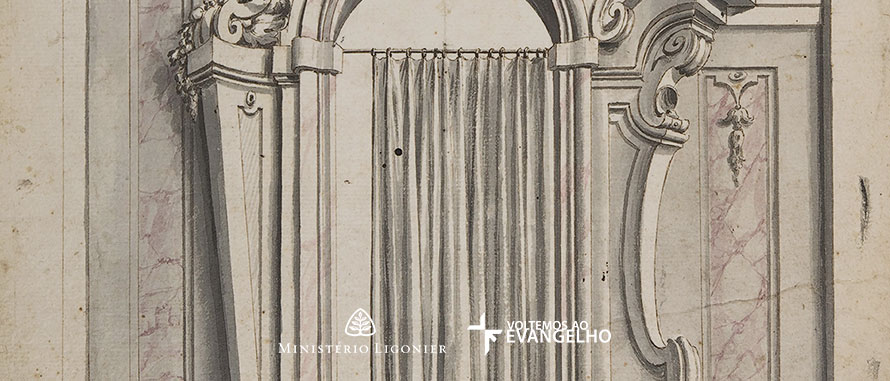When Adam and Eve lived in the garden, they were in the absolute presence of God, after their transgression, they were cast out, separated from God’s presence; cherubs with a sword of fire were placed east of the orchard to prevent their return. and impose separation from God’s presence; men could offer sacrifices to God, they could pray to Him, but the path to his presence would remain closed; the angels, though no longer visible, remained on guard; and this separation has been maintained for generations.
When Moses received the law on Mount Sinai, this law included instructions for the construction of the tabernacle, among these instructions was to make a curtain or veil (Ec 26:30-35). The purpose of this curtain was to establish a division. between the Holy Place and the Most Holy Place; in the holy place was the chandelier, the table for the bread of offering, and the altar of incense; in the most holy place was the ark of the covenant, covered by the propitiator, where two cherubs guarded God’s presence, it was the place where God made his presence visible and where he spoke to Moses.
- The veil separating the holy place from the very holy place was embroidered with cherubs.
- Representing the cherubs east of Eden.
- Taking humanity away from God’s presence.
- But there has been a change.
- The absolute prohibition of entering God’s presence was no longer so absolute; the door of God’s presence that had been so closed in Eden now had a crack; in fact.
- It was still a tiny crack.
- But it was a real crack.
- Now the high priest.
- Once a year.
- Accompanied by the smoke of incense and the blood of sacrifices.
- Could enter the sanctuary (Lv 16) and take the place of God’s presence.
People would know if she was properly educated. The law was to be read before the people every seven years (Deut 31:9-13), the Levites had to mention such things in their work of instruction among the people. However, for most people, change would have seemed insignificant, after all, it only affected the high priest and only once a year. Moreover, as generations passed, there were no further changes to the statutes indicating that further development could be envisaged. During the construction of the temple, a new veil. It was made embroidered with angels and separating the Saint of Saints (2Cr 3:14), and the walls of the temple were decorated with angels. Except for the high priest, once a year there was no entry into God’s presence.
But the prophetic age had suggested that more changes would come. Isaiah 25:7 says: “The blanket that surrounds all peoples and the veil placed upon all nations shall be destroyed on this mountain. “Covered, isn’t it the same as the word “navigate. “However, the connection to the Lord’s sacred mountain and people’s anxious expectation for its coming suggest at least one more change, a very significant change.
Once again, a period of silence followed; then, at the end of Jesus’ ministry, at the very moment of his death, the temple curtain was torn in two from top to bottom, a testimony that is included in all three synoptic gospels. (Mateo, Marcos and Lucas). Something strange, admirable and wonderful has happened. The path to the presence of God has been opened again. The synoptic gospels present the fact, while the author of Hebrews explains what happened.
First, we read that Jesus Himself pierces the veil, the curtain (Heb 6:19), as our High Priest; as the High Priest in the tabernacle and temple, Jesus entered the Holy Place of Saints; However, Jesus does not simply introduce him?An earthly representation from the holiest place in the temple, he entered the true Saint of Saints in heaven, where our hope was anchored.
Moreover, Jesus did not temporarily enter the very holy place, as the high priests of the Old Testament period did, but entered once and for all (9:11-12), that is, he entered once and for all for his people, and entered permanently, never to leave again.
Finally, the author of Hebrews tells us that we also have the privilege of entering the Holy Place of Saints, by the blood of Jesus (10:19-20). It also shows us that the curtain represented the body of Christ, with him shedding his blood, this curtain was torn and the way to God’s presence was restored; the guardian cherubs with the sword lit were removed; what was lost in Adam was recovered in Christ.
“Soli Deo Glory”.

